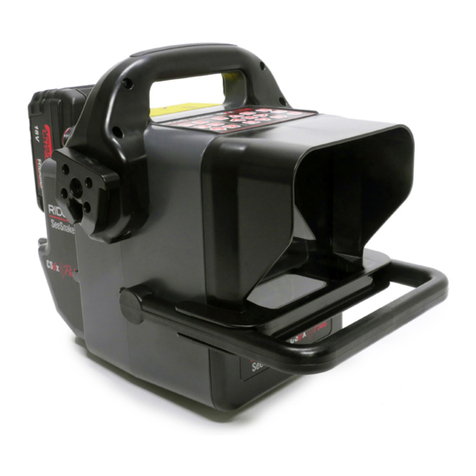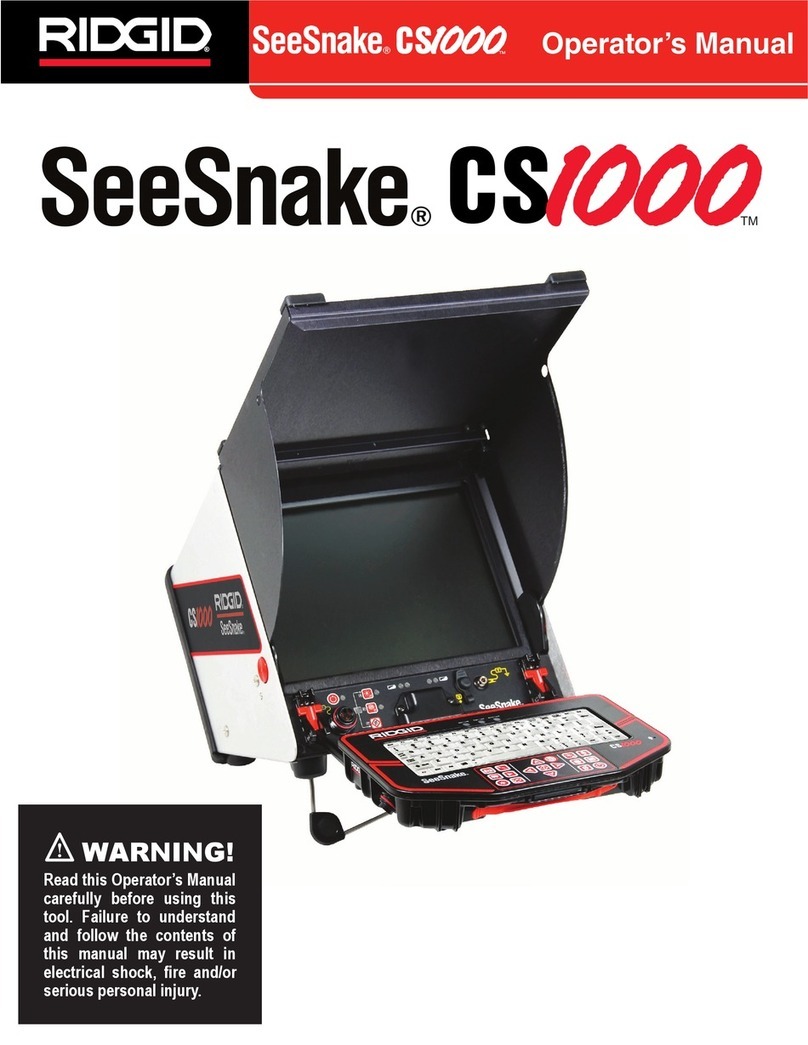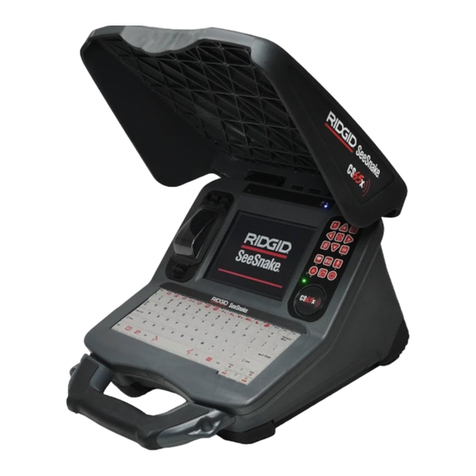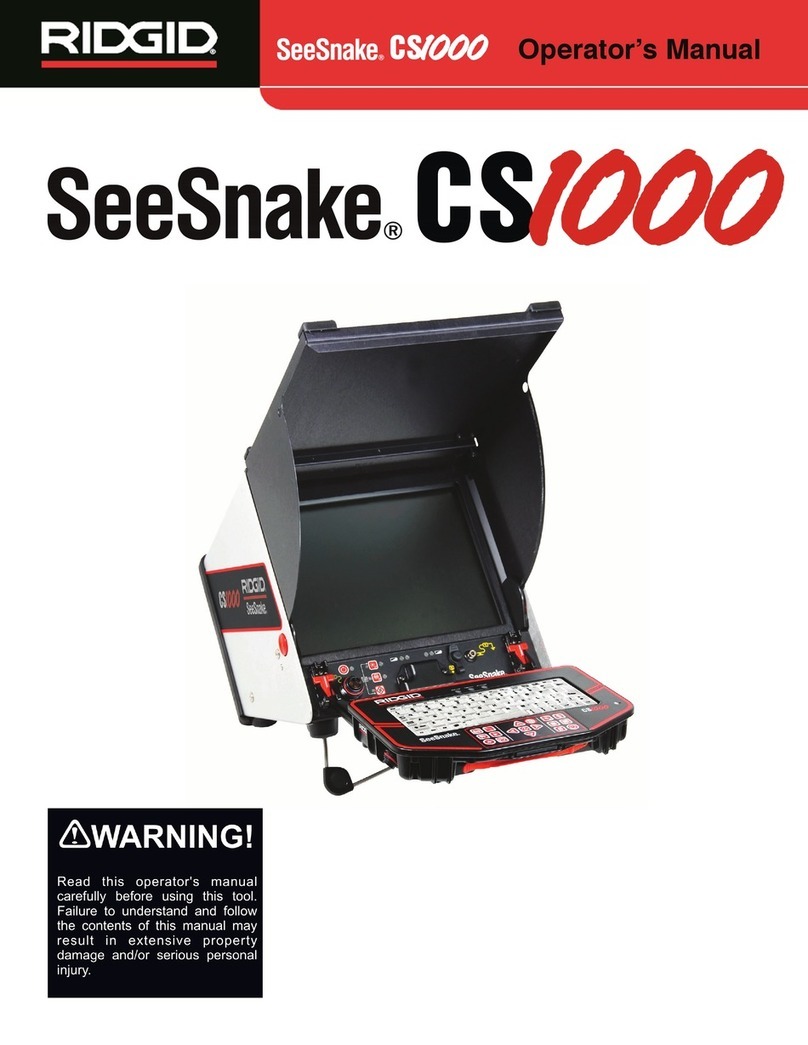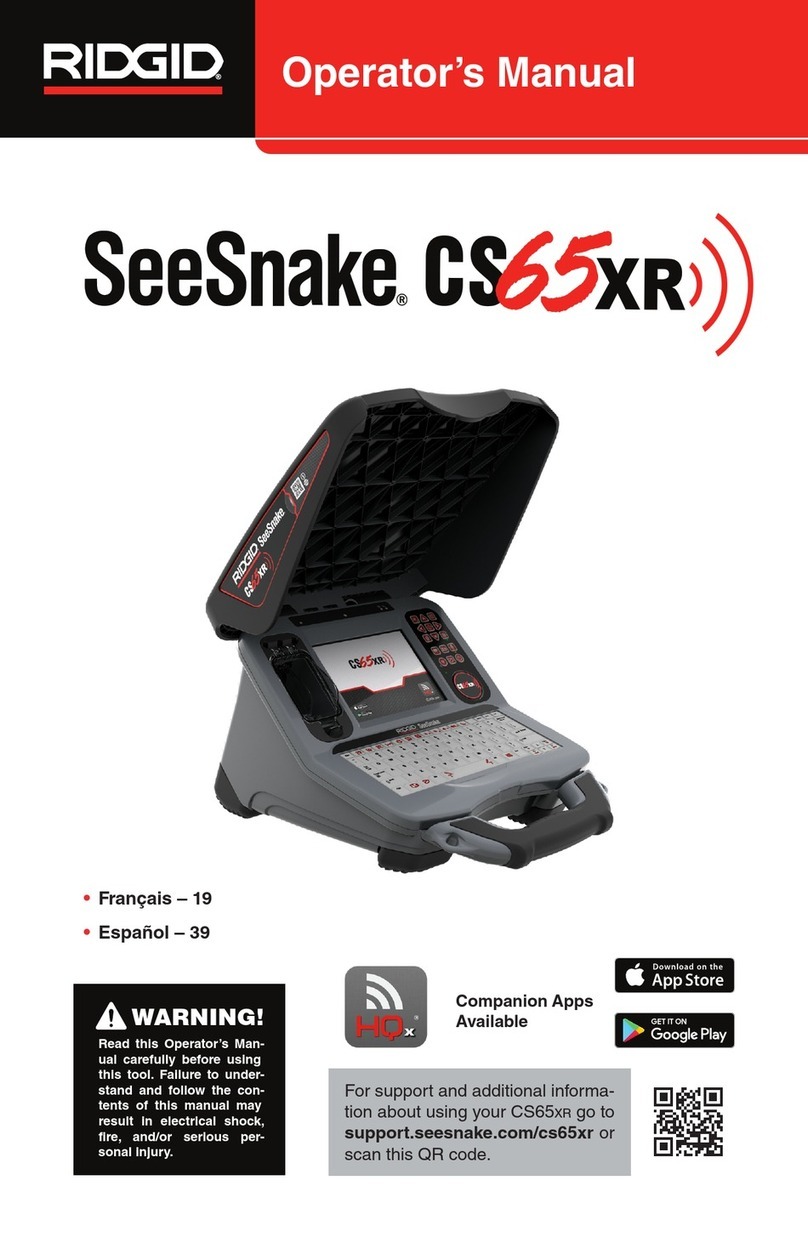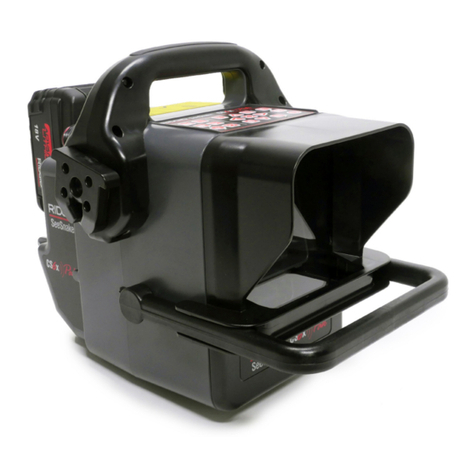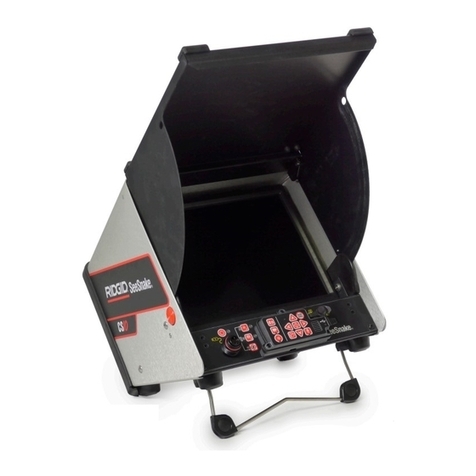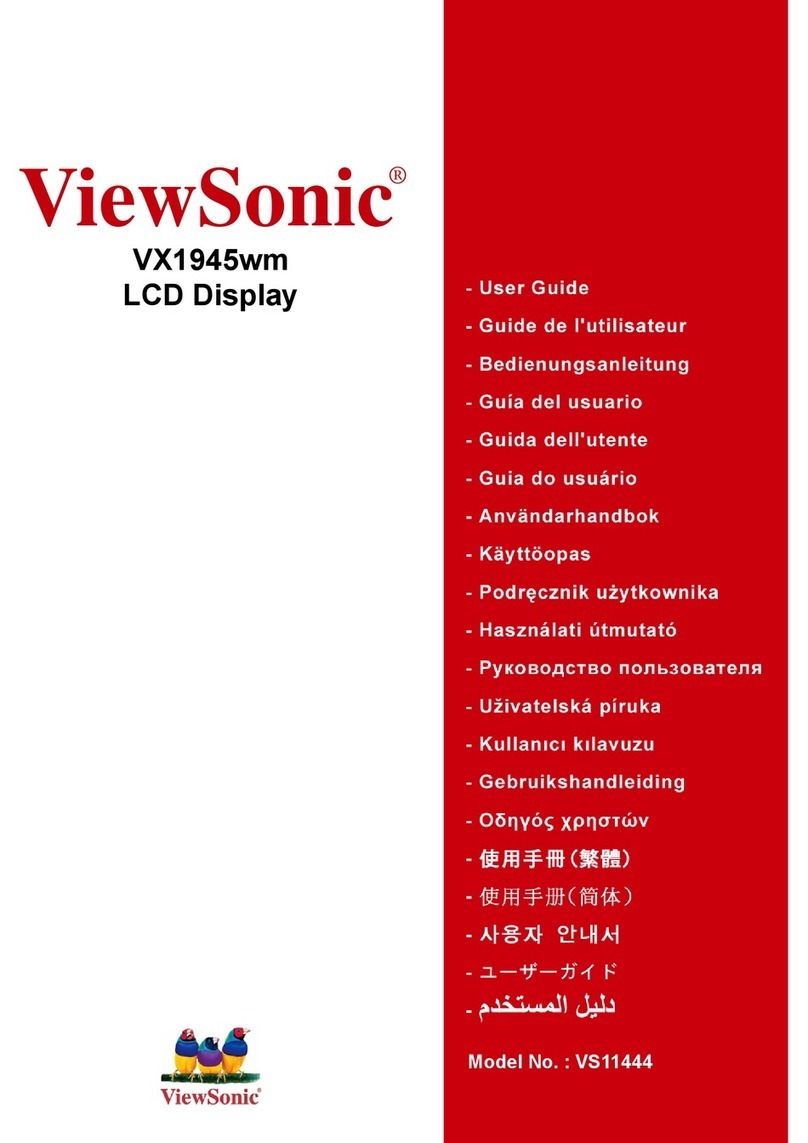
Ridge Tool Company 3
Personal Safety
Stay alert, watch what you are doing and
use common sense when operating
equipment. Do not use equipment while you
are tired or under the influence of drugs,
alcohol or medication. A moment of
inattention while operating equipment may
result in serious personal injury.
Use personal protective equipment. Always
wear eye protection. Protective equipment
such as dust mask, non-skid safety shoes,
hard hat, or hearing protection used for
appropriate conditions will reduce personal
injuries.
Do not overreach. Keep proper footing and
balance at all times. This enables better
control of the tool in unexpected situations.
Dress properly. Do not wear loose clothing
or jewelry. Keep your hair, clothing, and
gloves away from moving parts. Loose
clothes, jewelry, or long hair can be caught in
moving parts.
Equipment Use and Care
Do not force equipment. Use the correct
equipment for your application. The correct
equipment will do the job better and safer at
the rate for which it is designed.
Do not use equipment if the switch does not
turn it ON and OFF. Any equipment that
cannot be controlled with the switch is
dangerous and must be repaired.
Disconnect the plug from the power source
and/or the battery pack from the equipment
before making any adjustments, changing
accessories, or storing. Such preventive
safety measures reduce the risk of injury.
Store idle equipment out of the reach of
children and do not allow persons
unfamiliar with the equipment or these
instructions to operate the equipment.
Equipment can be dangerous in the hands of
untrained users.
Maintain equipment. Check for misalignment
or binding of moving parts, missing parts,
breakage of parts and any other condition that
may affect the equipment’s operation. If
damaged, have the equipment repaired before
use. Many accidents are caused by poorly
maintained equipment.
Use the equipment and accessories in
accordance with these instructions, taking
into account the working conditions and the
work to be performed. Use of the equipment
for operations different from those intended
could result in a hazardous situation.
Use only accessories that are
recommended by the manufacturer for your
equipment. Accessories that may be suitable
for one piece of equipment may become
hazardous when used with other equipment.
Keep handles dry and clean; free from oil
and grease. Allows for better control of the
equipment.
Battery and Charger Safety
Recharge only with the charger specified by
the manufacturer. A charger that is suitable
for one type of battery pack may create a risk
of fire when used with another battery pack.
Use equipment only with specifically
designated battery packs. Use of any other
battery packs may create a risk of injury and
fire.
Do not probe battery with conductive
objects. When battery pack is not in use,
keep it away from other metal objects, like
paper clips, coins, keys, nails, screws or
other small metal objects that can make a
connection from one terminal to another.
Shorting the battery terminals together may
cause burns or a fire.
Under abusive conditions, liquid may be
ejected from the battery; avoid contact. If
contact accidentally occurs, flush with
water. If liquid contacts eyes, additionally
seek medical help. Liquid ejected
from the battery may cause irritation or burns.
Use and store batteries and chargers in dry,
appropriate temperature areas. Extreme
temperatures and moisture can damage
batteries and result in leakage,
electrical shock, fire or burns. See charger
manual for more information.
Do not cover charger while in use. Proper
ventilation is required for correct operation.
Covering charger in use could result in fire.
Properly dispose of batteries. Exposure to
high temperatures can cause the batteries to
explode, so do not dispose of in a fire. Some
countries have regulations concerning battery
disposal. Please follow all applicable
regulations.
Service
Have your equipment serviced by a
qualified repair person using only identical
WARNING
Read the battery charger manual before using the
charger or batteries. Failure to read, understand and
follow the contents of the charger manual may result
in extensive property damage, severe personal injury,
r
h.
